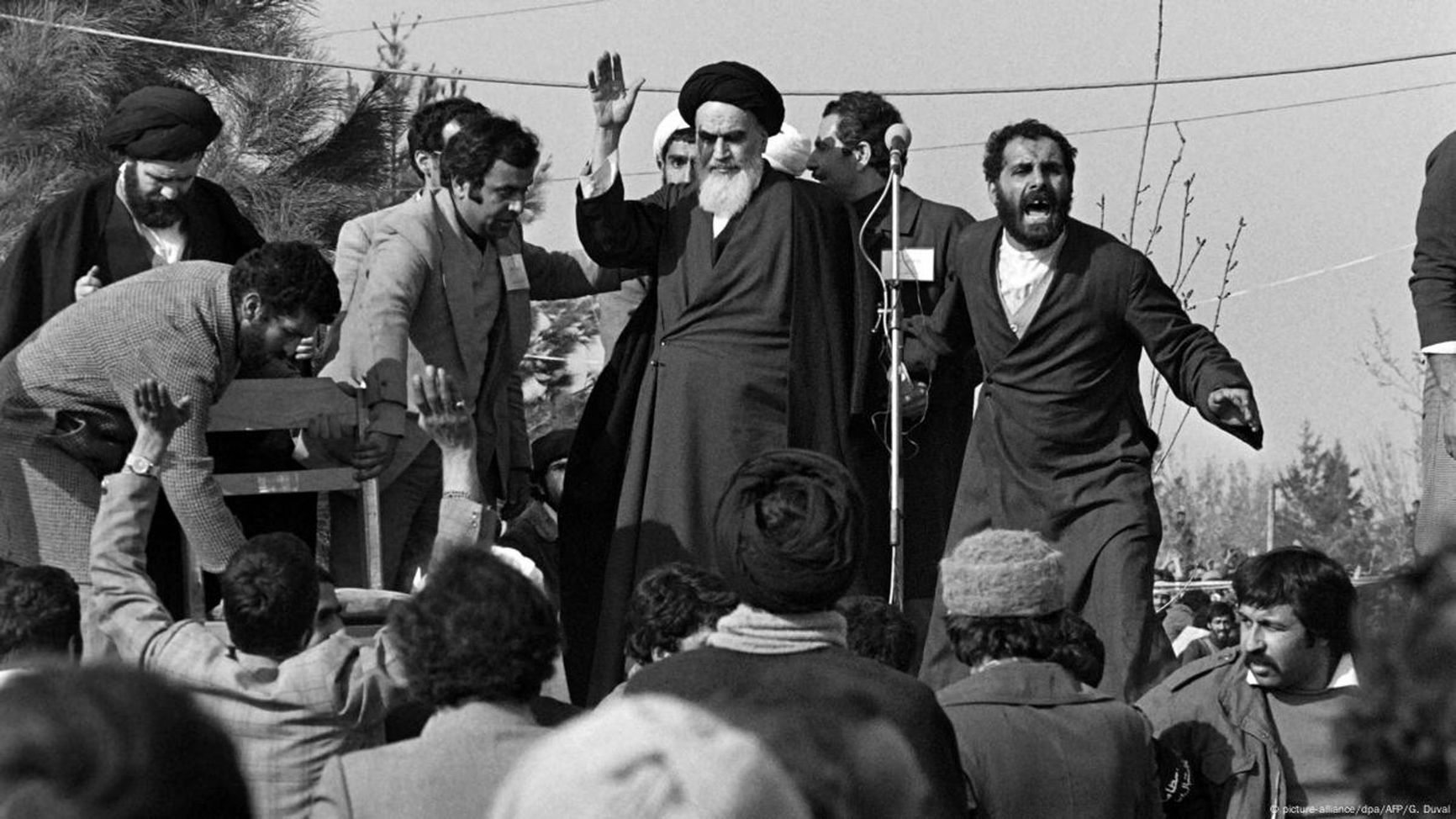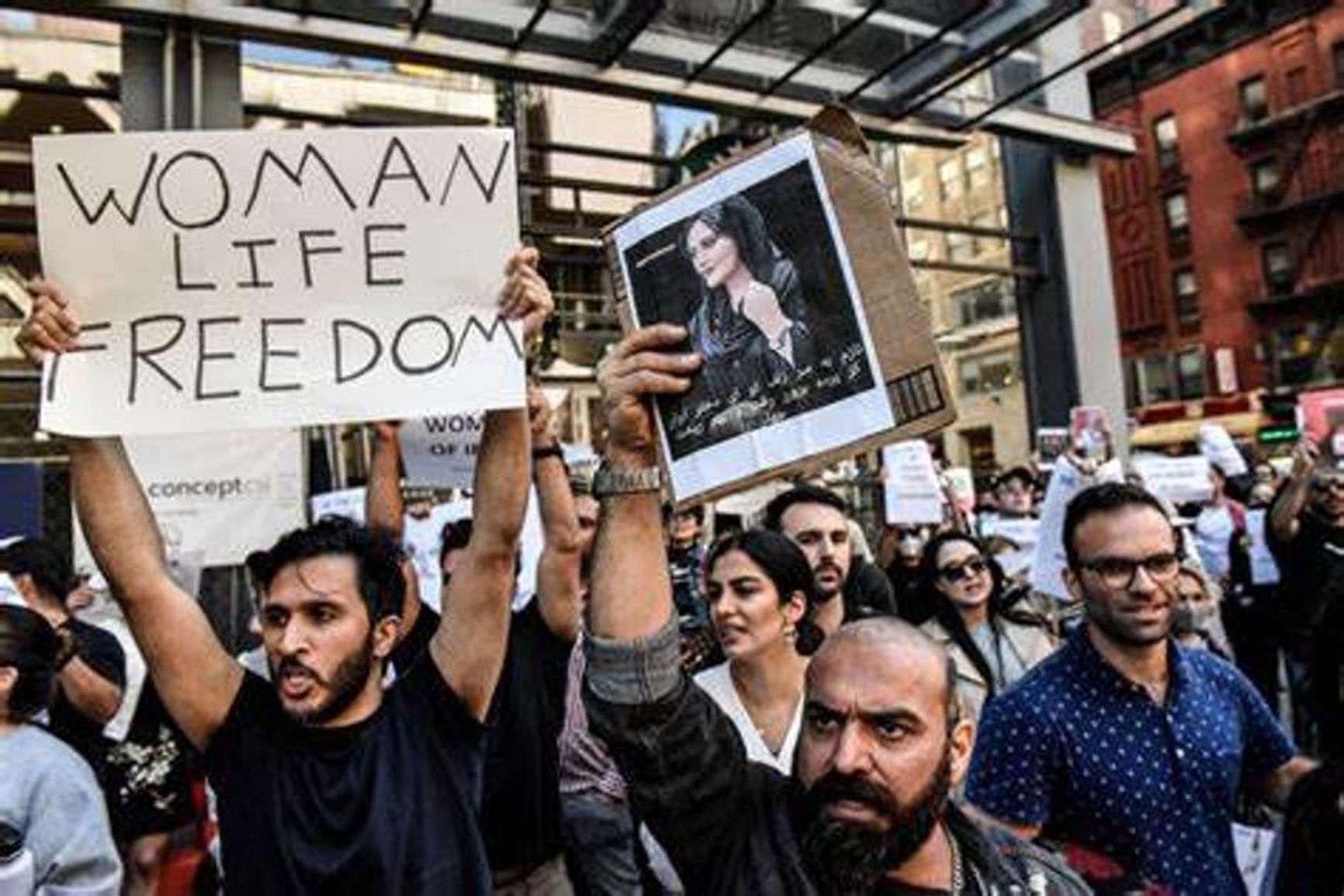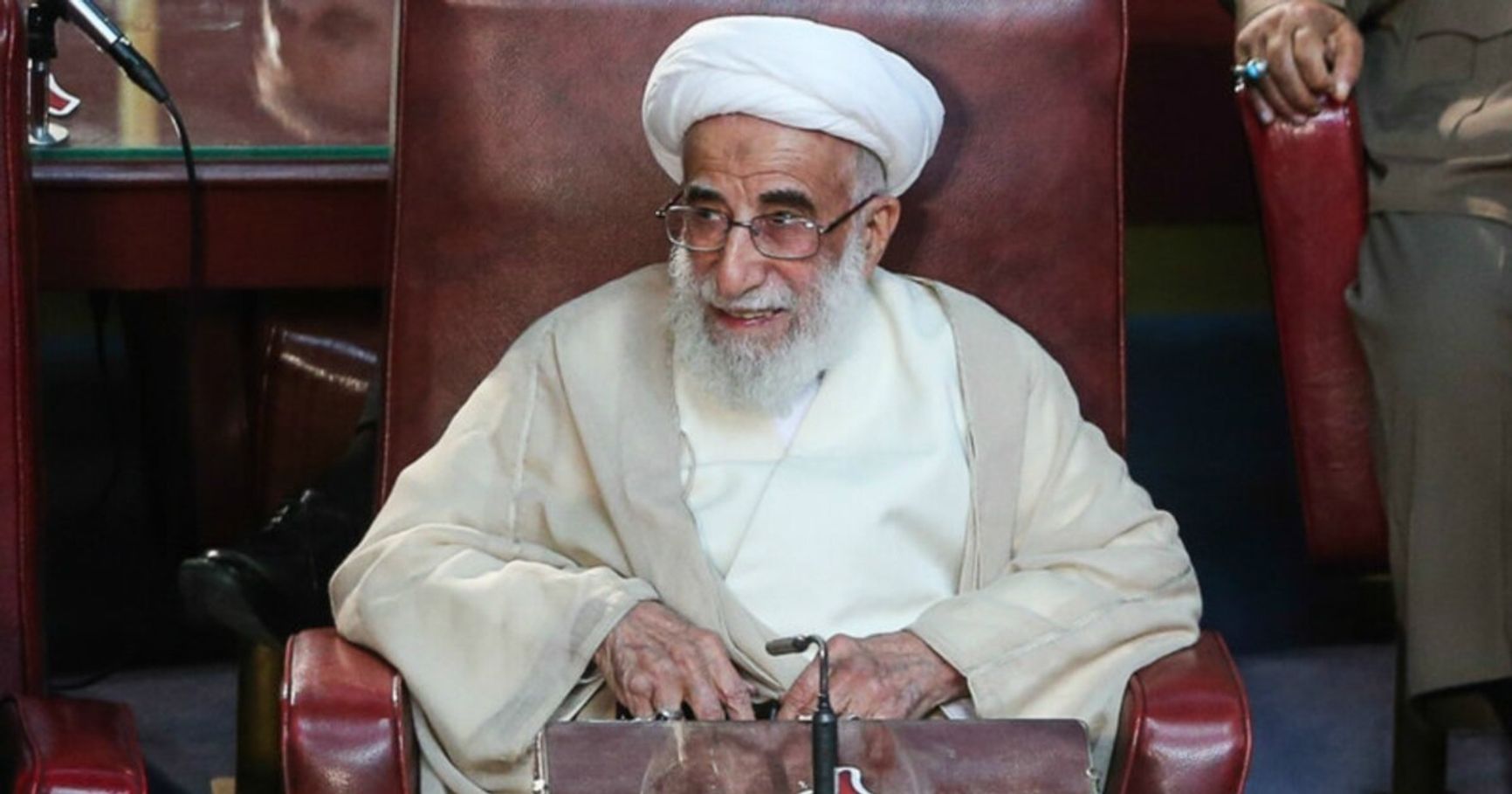

On April 19, the United States and Iran held another round of talks on a potential new nuclear deal. While some members of Donald Trump's administration pushed for compromise, the majority backed a harder line, favoring ultimatums — and even threatening airstrikes. Even if war is avoided, Iran is heading toward major changes: the ruling elite, aging and increasingly frail, will soon give way, while younger generations are demanding political reform.
Content
War or revolution
Hidden protest energy
The evolution of protest sentiment
Generation Z: a demand to dismantle the theocracy
The departing elite
War or revolution
The idea that the ayatollahs’ regime is a colossus with feet of clay has been circulating for years, and it has only gained momentum amid growing rumors about the ill health of 86-year-old Supreme Leader Ali Khamenei. The previous U.S. administration made clear it had no intention of meddling in Iran’s internal affairs. “Our view is quite straightforward. We believe that the future of Iran should be up to the Iranian people. We do not believe that the United States has a particularly good track record of designing policy to try to generate regime change in other countries,” National Security Advisor Jake Sullivan said last year during the waning days of Joe Biden’s presidency.
The U.S. approach has shifted sharply with the return of Trump, who in his first term, too, was known for using aggressive rhetoric towards Tehran. Negotiations over Iran’s nuclear program have resumed, but success is far from assured. Officials in Washington are openly discussing the possibility of striking Iranian nuclear sites as an alternative to solving things via a diplomatic solution. Should outside intervention occur, it would all but inevitably spark political upheaval within Iran — change that, for now, is being held back only by the heavy hand of the repressive state apparatus.
Hidden protest energy
Judging by the headlines, the Islamic Republic appears to be a stronghold of radical religious conservatism. The state bans women from appearing in public without head coverings, sponsors rallies where American and other flags are publicly burned, and repeatedly threatens Israel with destruction. Over the past year, tensions between Iran and Israel have edged closer to open military confrontation.
At the same time, the nationwide protests of fall 2022 offered clear evidence that the state is facing a crisis of legitimacy. The unrest was sparked by women's mounting anger over hijab regulations, but the grievances go far beyond that. What people are protesting is vividly captured in the song “Baraye” (Persian for “For the sake of...”), which became the unofficial anthem of the movement. Among its lines are: “for the right to dance in the street,” “because of shame and poverty,” “because of air pollution.” The list of grievances is long, stretching from economic hardships and bans on self-expression to the problem of environmental degradation.
The divide between the people and the authorities is stark, as shown by the reaction to the killing of Hezbollah leader Hassan Nasrallah by Israeli forces in the fall of 2024. On September 29, state-run media reported about the government-organized anti-Israel rallies that were staged across the country. Meanwhile, opposition sources shared photos and videos of unsanctioned protests by pensioners demanding higher benefits — also held nationwide on the same day.
Equally telling is the attitude of ordinary Iranians toward the official crusade against Zionism, still one of the Islamic Republic’s core foreign policy doctrines. There is little sign of grassroots support for this initiative. Even high-profile Israeli covert operations inside Iran failed to stir any popular reaction. Judging by the slogans at protest rallies, what concerns the average Iranian is not official ideology, but inflation and unemployment. The conflict with Israel is seen largely as background noise.
The evolution of protest sentiment
The Islamic Republic of Iran was founded in 1979 as a response to citizens’ demands for greater freedom and independence. When Iraq, led by Saddam Hussein, attacked Iran in 1980, the young generation born in the 1950s and 1960s went to the front lines to defend the new republic. This group came to be known as the “revolutionary generation”: they fought in the war and later took part in rebuilding the country. Despite strict controls — such as the mandatory wearing of the hijab for women and the repression of political opponents, regardless of gender — Iran maintained relative stability throughout the 1980s and 1990s.

One of the slogans of the 1979 Islamic Revolution in Iran was the fight for freedom
Then came Generation Y, the millennials. Born in the 1980s and early 1990s, many of these initially held onto the ideals of the Islamic Revolution, but they soon began openly demanding reform. Among the youth of that era, the call for the right to criticize the government without fear of repression was expressed with increasing clarity. In 1999, student protests erupted in Tehran after the closure of the reformist newspaper Salam. What began as a series of peaceful demonstrations was brutally crushed by government forces, leaving several people dead.
Millennials in Iran still believe in the ideals of the Islamic Revolution but demand reform
The peak of political activism among Iran’s millennials came with the 2009 “Green Movement.” Hundreds of thousands of Tehran residents flooded the streets, convinced that the presidential election — won by the ultraconservative Mahmoud Ahmadinejad — had been rigged. These protests, too, were crushed, although the authorities later made some concessions, allowing the reformist Hassan Rouhani to win in the next election. Still, the president in Iran is not the country's top authority — ultimate power rests not with secular leaders, but with the religious establishment.
One of the main chants during the “Green Revolution” was marg bar diktator — ”death to the dictator” — a call for the execution of Supreme Leader Ali Khamenei. Yet even then, there was no broad consensus in society about abandoning theocratic rule. Today, that demand has become much sharper.
Generation Z: a demand to dismantle the theocracy
By the late 2010s, the Islamic Republic was grappling with a host of new social and economic challenges. Amid international sanctions and poor economic management, inflation soared to 40 percent, real incomes fell for most of the population, and young people faced mass unemployment. Around the same time, Generation Z — those born in the late 1990s and early 2000s — was coming of age, shaped by the digital era.
This generation largely rejects the traditional ideological constraints that define the Islamic Republic. Many are indifferent to both the country's entrenched political doctrines and to religion itself. For them, individual freedoms are paramount, and unrestricted access to the internet is seen as a basic right.
It was this cohort that became the driving force behind the 2022 protests — sparked by the death of 20-year-old Mahsa Amini, who was detained by the morality police for allegedly violating hijab rules. The protests quickly moved beyond calls for freedom of dress to demands for the overthrow of Ayatollah Ali Khamenei's regime. Protesters' chants included: “This is a bloody year, Seyyed Ali [Khamenei] will be overthrown” and “Khamenei is a murderer, his rule is absurd.”

The 2022 protests in Iran were brutally suppressed
Social media has erased borders and distances, and for an Iranian zoomer, it is difficult to understand why life in Tabriz or Isfahan should be worse than in Cologne or Chicago — or why they should obey the regime’s restrictions around self-expression. On March 8, 2023, girls from Tehran posted a flashmob video of themselves dancing to Rema’s song “Calm Down.” The video quickly gained popularity, and Iranian law enforcement began searching for the girls, whose dance was deemed “inconsistent with Islamic norms” (formally, dancing is not illegal in Iran, but in practice, the regime bans all public dancing, especially if it involves men). Thanks to the public attention the episode attracted, the girls were let off with only interrogations and warnings.
A telling indicator of public sentiment and the authorities' crisis of legitimacy is voter turnout. In the first round of the 2024 presidential election, only 40 percent of voters showed up at the polls, and that was according to official figures. By comparison, turnout was 85 percent in 2009, 72 percent in 2013, and 73 percent in 2017. Since then, turnout has plummeted, and today most Iranians do not trust the electoral process. Rather than participating in an empty process, they simply stay away.
This disillusionment extends to the country's foreign policy. A significant portion of the population does not see the United States as a threat to Iran — in fact, many believe that engagement with the West is key to the country’s development. Many disapprove of Iran’s support for armed groups such as Hezbollah and the Houthis. Most do not consider Israel an enemy, viewing the conflict between the Jewish state and Palestine as an Arab issue. To a large extent, these trends also apply to Russia — in today’s Iranian society, calling someone a Russophile or a supporter of Moscow is seen almost as an insult. In the early days of Russia’s full-scale invasion of Ukraine, Tehran saw isolated protest rallies against Putin’s decision.
This shift in views is likely driven by a growing alienation from the authorities, creating a simple dichotomy: I am against everything the Islamic Republic stands for. In short, there is a deep demand for change running through contemporary Iran — even among those connected to the regime. Millennials already hold most key mid-level government posts, while members of Gen Z are now beginning to serve in the army and law enforcement.
The departing elite
Iran’s gerontocracy has long been a target of ridicule, with much of the mockery directed at Ahmad Jannati, the long-serving head of one of the country’s main governing bodies, the Assembly of Experts. Jannati turned 98 this past February. Iran’s “Supreme Leader,” Ayatollah Ali Khamenei, celebrated his 86th birthday on April 19. Politicians who hold elected positions in the Islamic Republic are somewhat younger but still belong to the generation of the Islamic Revolution. Ebrahim Raisi, the president who died in a helicopter crash in 2024, was 63 years old. The current head of government, Masoud Pezeshkian, is 70, and the speaker of the Majles, Mohammad Bagher Ghalibaf, is 63. These figures were not the principal architects of the revolution, but they lived through it and were active participants in their youth.

Ahmad Jannati
If war does not intervene, then — as in the previous succession of the Supreme Leader in 1989 — the fate of power will likely be decided by a “bulldog fight under the carpet.” More than thirty years ago, the leading political players in that struggle were Majlis speaker Ali Akbar Hashemi Rafsanjani, who eventually became president, and Iran’s then-president Ali Khamenei, who was elevated to Supreme Leader. Today, the key contender for the top spot in the inevitable transition appears to be Khamenei’s son, Mojtaba, who was only 10 years old in 1979. Rumors that he is being groomed as a successor have circulated for years. However, it is unlikely that the transition can be secured simply by the “testament” of the current Supreme Leader — especially since Khamenei himself has never publicly named his son as successor. What will ultimately matter is the real political and administrative clout that different factions are able to wield at the critical moment.
In 1989, the population was exhausted by war and mass repression, allowing the transition of power to proceed relatively quietly — the leadership decided everything. Today, however, protest activity in society is high. In the information age, it is also unlikely that Khamenei’s departure could be concealed from the general public, meaning that factions vying for power may try to leverage public sentiment to tilt the balance in their favor.
One of the challenges of the transition is the uncertainty over how united Iranians are around a common vision of the future. Value differences may arise not only between generations, but also among ethnic groups, the largest of which — the Persians — make up only about 50% of the population. Regional disparities, wealth inequality, and other demographic factors are also significant. One way or another, inevitably, there is going to be a real competition for power.